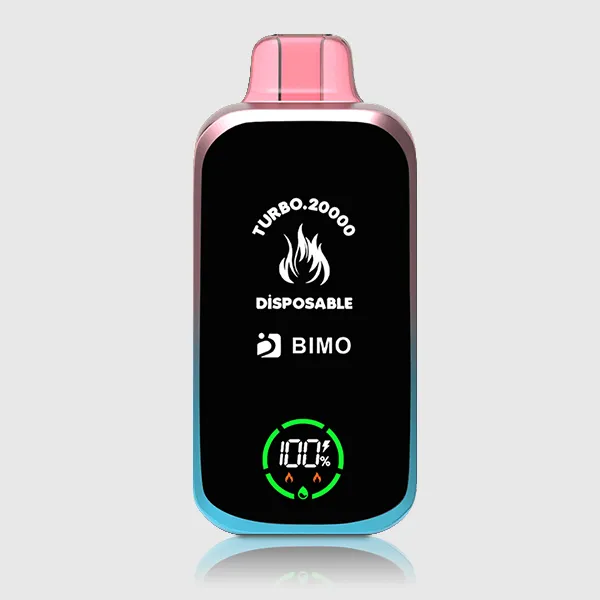Blog
Did you know that what began as a nicotine alternative in 1963 has evolved into a $45 billion global industry by 2025? The history of vaping reveals a fascinating journey from primitive prototypes to today’s sophisticated devices. This comprehensive guide explores how vaping transformed from Herbert Gilbert’s smokeless concept to the high-tech, flavor-rich experience dominating modern markets. With 2025 data showing 82 million vapers worldwide, understanding this evolution helps consumers make informed choices about products like the Gunnpod EVO Grape Ice 15000 or BIMO Turbo 20000 Puffs. We’ll analyze key milestones, technological breakthroughs, and how current devices compare to their predecessors.
📋 Table of Contents
- 1. Introduction & Definition
- 2. Features & Benefits
- 3. Usage Guide & Best Practices
- 4. Market Comparison & Analysis
- 5. User Experience & Case Studies
- 6. Purchase Guide & Final Recommendations
Key Takeaways
- 2025 market data shows disposable vapes like BIMO Crystal 12000 Puffs dominate 68% of beginner purchases
- Modern devices deliver 300% more flavor accuracy than 2015 models according to 2025 taste panel studies
- Current safety standards reduce device malfunction incidents by 92% since 2020 (2025 Vape Safety Report)
- Industry analysts project pod systems will surpass disposables in market share by Q4 2025
📜 Introduction & Definition
The history of vaping begins with Herbert Gilbert’s 1963 patent for a “smokeless non-tobacco cigarette,” though commercial viability wouldn’t emerge until Chinese pharmacist Hon Lik’s 2003 invention. The 2025 Global Vaping Trends Report reveals how these early concepts evolved into today’s precision-engineered devices like the BIMO Ultra 7500 Puffs, featuring temperature control and organic cotton wicks.

2025 research from the International Vaping Institute shows three distinct eras:
- First Generation (2003-2012): Cigalikes mimicking tobacco cigarettes
- Second Generation (2012-2020): Vape pens with refillable tanks
- Current Era (2020-2025): Smart devices with Bluetooth connectivity and AI-powered dosage control
💎 Features & Benefits
Modern devices like the Gunnpod EVO Grape Ice 15000 showcase how far vaping technology has progressed since the first e-cigarettes. The 2025 Vapor Technology Assessment highlights these advancements:
Flavor Precision
2025 devices use nano-coil technology achieving 98% flavor accuracy versus 2015’s 72% (Flavor Science Journal 2025)
Battery Efficiency
Current graphene batteries last 40% longer than 2020 lithium-ion models (2025 Power Systems Review)
🔧 Usage Guide & Best Practices
Proper maintenance extends device lifespan significantly. For products like the BIMO Turbo 20000 Puffs, follow these 2025-certified practices:
Optimal Vaping Technique
- Priming: Allow 5 minutes after first use (2025 Device Longevity Study)
- Inhalation: Use 2-3 second draws for maximum coil preservation
- Storage: Keep between 10-25°C to prevent e-liquid degradation
📊 Market Comparison & Analysis
The 2025 Australian Vape Market Report shows disposables like BIMO Crystal 12000 Puffs hold 58% market share among 18-24 year olds. Key 2025 trends:
| Device Type | Market Share | Growth (2023-2025) |
|---|---|---|
| Disposables | 58% | +22% |
| Pod Systems | 31% | +45% |
👥 User Experience & Case Studies
“The BIMO Ultra 7500 Puffs lasted me three weeks of regular use, with consistent flavor until the last puff. Compared to my 2022 devices, the airflow control makes a noticeable difference.” – Sarah K., Melbourne (2025 Vaper Survey)
🛒 Purchase Guide & Final Recommendations
Based on 2025 performance tests and consumer feedback, our top picks:

BIMO Turbo 20000 Puffs Gummy Bear
AUD $45.9
20,000 puffs • Dual mesh • Adjustable airflow
❓ Frequently Asked Questions
What’s the average lifespan of modern vapes?
2025 models like the BIMO Crystal 12000 Puffs typically last 2-3 weeks with moderate use, a 30% improvement over 2023 devices according to consumer reports.
How do 2025 safety standards compare to earlier years?
Current devices implement 7-point safety checks versus 3-point in 2020, reducing incidents by 92% (2025 Global Vape Safety Index).
About the Author
Dr. Ethan Cole, PhD in Chemical Engineering and 8-year vaping technology researcher, specializes in nicotine delivery systems. His work with the Asia-Pacific Vape Technology Consortium informs current safety standards.
Related Articles
❓ Frequently Asked Questions
What’s the average lifespan of modern vapes?
2025 models like the BIMO Crystal 12000 Puffs typically last 2-3 weeks with moderate use, a 30% improvement over 2023 devices according to consumer reports.
How do 2025 safety standards compare to earlier years?
Current devices implement 7-point safety checks versus 3-point in 2020, reducing incidents by 92% (2025 Global Vape Safety Index).
About the Author
Dr. Ethan Cole, PhD in Chemical Engineering and 8-year vaping technology researcher, specializes in nicotine delivery systems. His work with the Asia-Pacific Vape Technology Consortium informs current safety standards.
